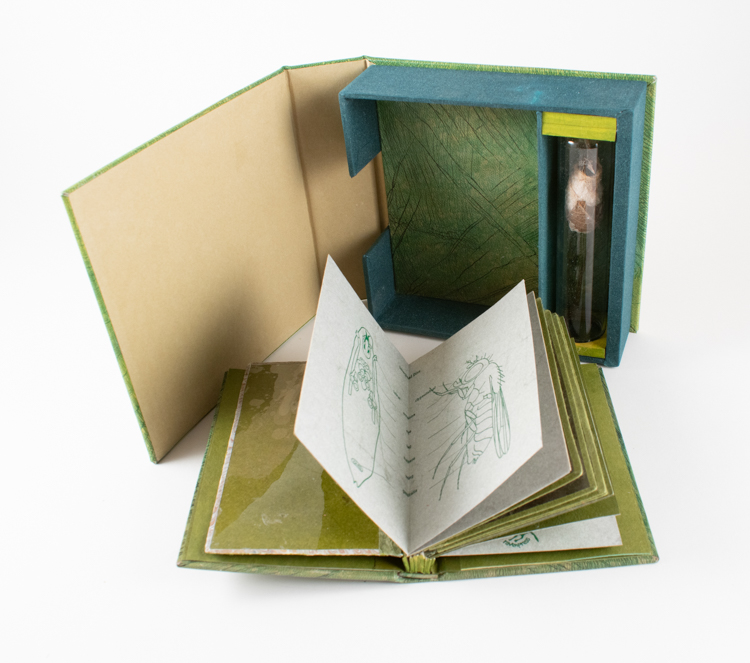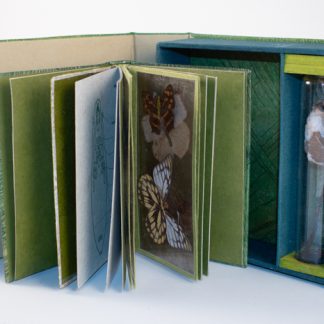Moth and butterfly wings are near the top of my list of natural wonders. Not only because the variety of patterning, color and varying degrees of symmetry are aesthetically pleasing, but because of their incredible functionality. Finding ways to preserve them after a critter’s short life is one of the reason’s I created this book, the second in an open ended series of variants.
In addition to the preservation of wing bits, this book presents a lay persons summary of the metamorphosis butterflies and moths undergo in an ongoing cycle.
Four rigid pages of wing specimens encapsulated in mica, and edge wrapped with Moriki paper with paper tab extensions sewn onto stubs. Two additional pages of laminated hand made paper, present the title, text and colophon. Sewn end sheets of complete the book block, which is laced onto boards in a tight back, full leather binding. The book has leather end bands and a hand-tooled gold foil drawing on the front cover.
Housed in a full leather, bespoke drop spine box with a double compartment tray. One compartment houses the book, the other a specimen of a cocoon and twig in a glass tube. Cover and spine labels are of dyed paper with fusion foil and are recessed. Tray is lined with hand dyed leather; paste down is paper, tray walls are hand-dyed book cloth, magnets help keep the cover closed.
Materials:
Book: book board, paper, hand dyed leather, hot foil, thread, mica, laser toner, fusion foil, moth & butterfly specimens.
Box: book board, book cloth, paper, suede, mica, butterfly specimen.
Here’s the text:
The specimens encapsulated in these pages are the result of a magnificent series of steps, one that is specific to the superorder Holometobola, in which the immature stages of an insect are very different from the mature stages. The four stages of this metamorphoses are the egg stage, the caterpillar (larval) stage, the pupa stage and the adult stage.
The process begins with the formation of imaginal discs in the egg. Imaginal discs are highly organized groups of cells; one is formed for each of the adult body parts an adult butterfly needs. A disc for eyes, another for wings, another for legs etc.
The caterpillar’s role, after hatching from an egg, is to eat, and eat, and eat some more. They grow, and grow and grow some more — up to one hundred times their original size. Once enough size is attained the hormone ecdysone is released. This hormone instructs the larva to molt.
Molting is the process by which the outer skin is softened and discarded and replaced with a larger skin. After molting several times, the caterpillar stops eating and hangs upside down from a twig or leaf to enter the pupation stage. During pupation the caterpillar either spins a cocoon or molts into a chrysalis.
Inside this protected space, orchestrated by another round of enzymes, the caterpillar’s body is completely reconstructed – organs, tissues and body are almost entirely digested. Only the imaginal discs survive intact. Using the protein-rich soup created by self-digestion, a rapid cell division of the discs triggers formation of wings, antennae, legs, eyes, genitals and all the other features of an adult butterfly or moth.
Now ready to emerge, the butterfly or moth breaks from the cocoon or chrysalis, unfurls its wings, allowing them to harden before setting off to fulfill its purpose in life: reproduction.
From the colophon: The specimens in this book were collected in the early 20th century from Colorado’s front range and preserved by Ruth Wheeler, a biologist/educator (and my great-aunt).
Designed and crafted in a studio perched on the traditional lands of the Arapahoe, Cheyenne, Ute and Oglala Sioux.
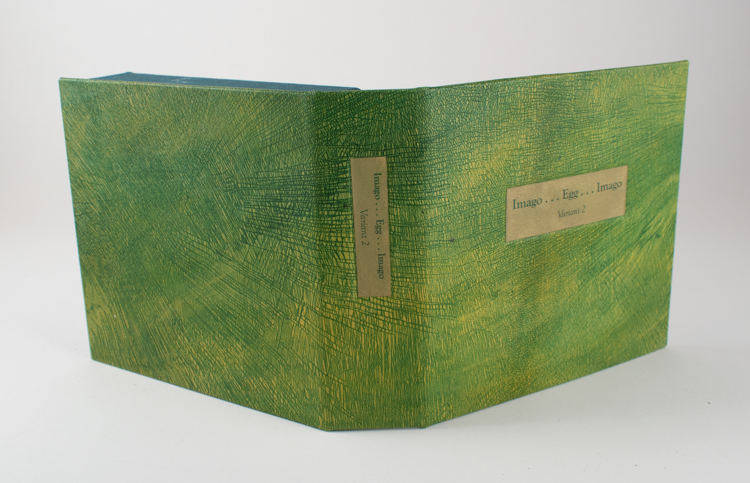
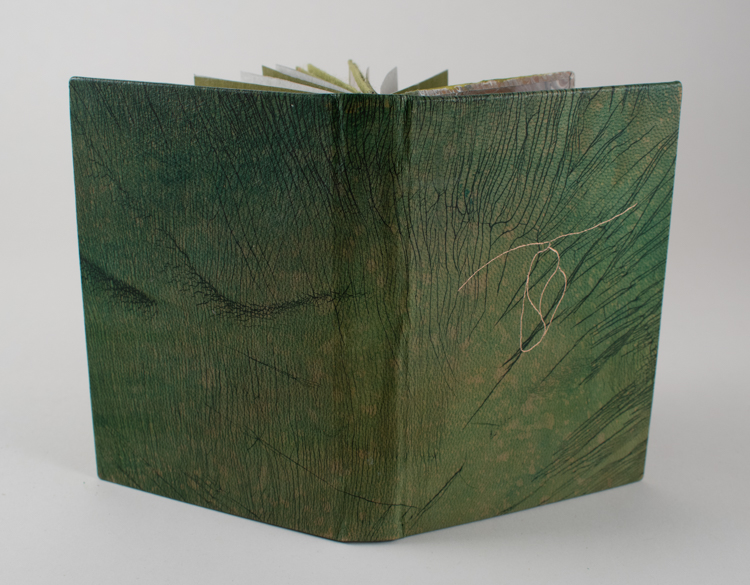

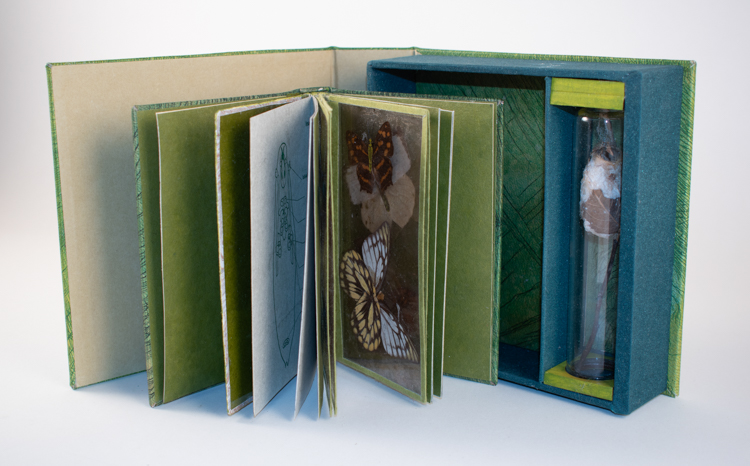
Imago . . . Egg . . . Imago variant 2
$ 1,200.00
© 2024
edition of:1
dimensions in inches: 6.5 x 6.5 x 2
